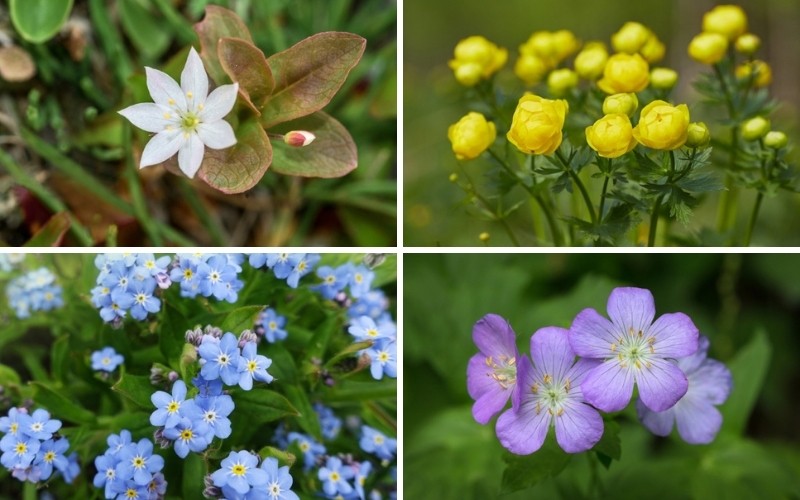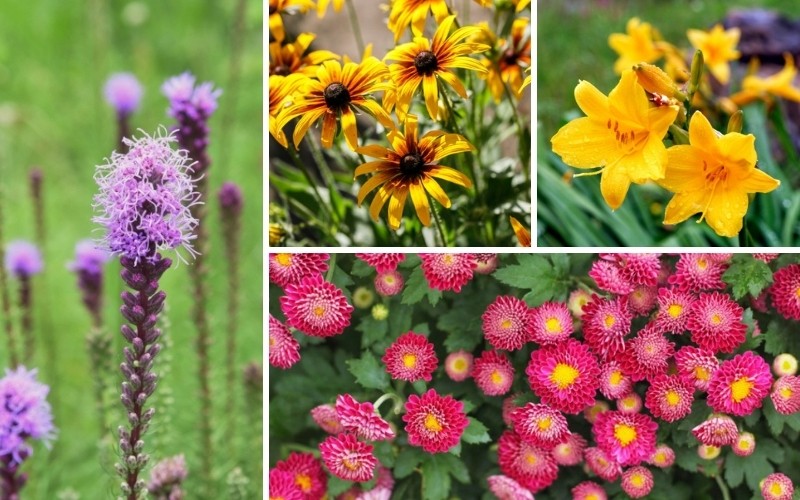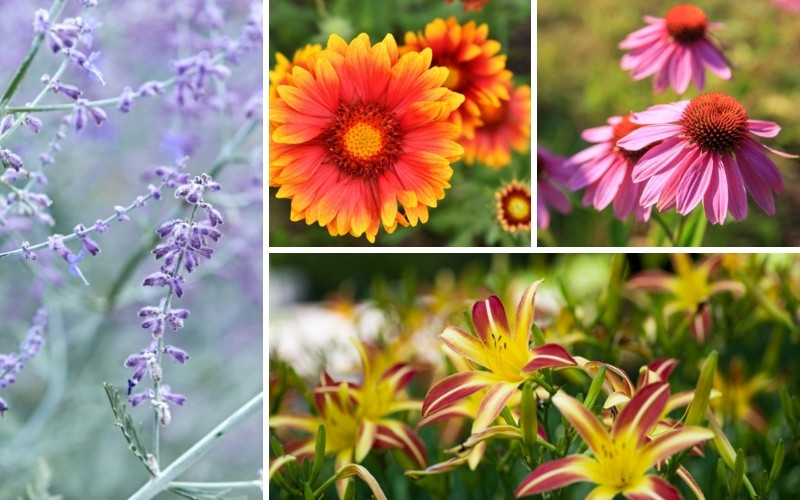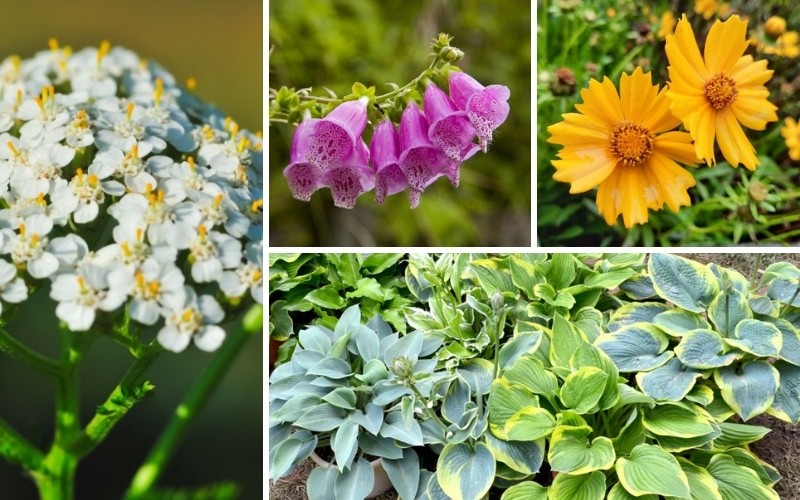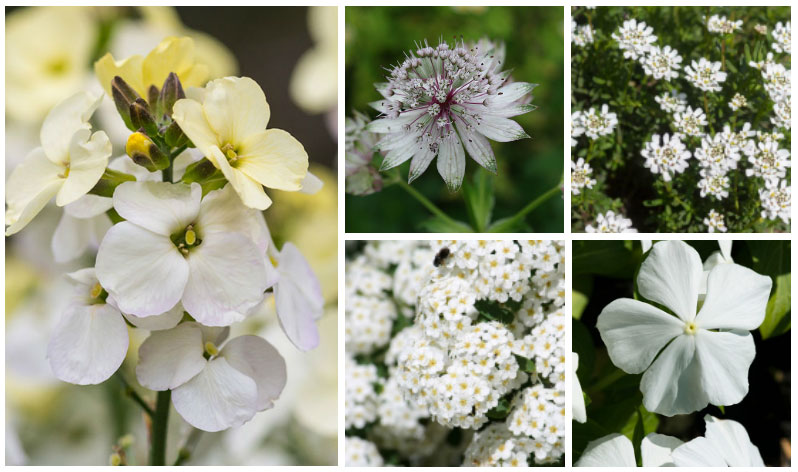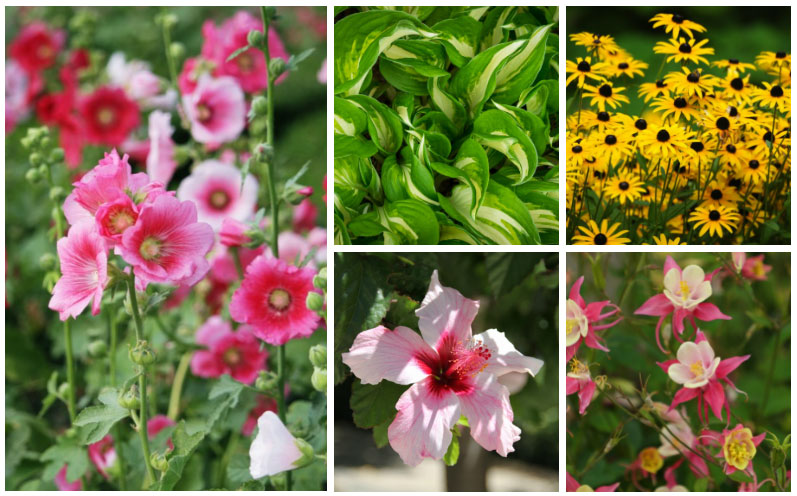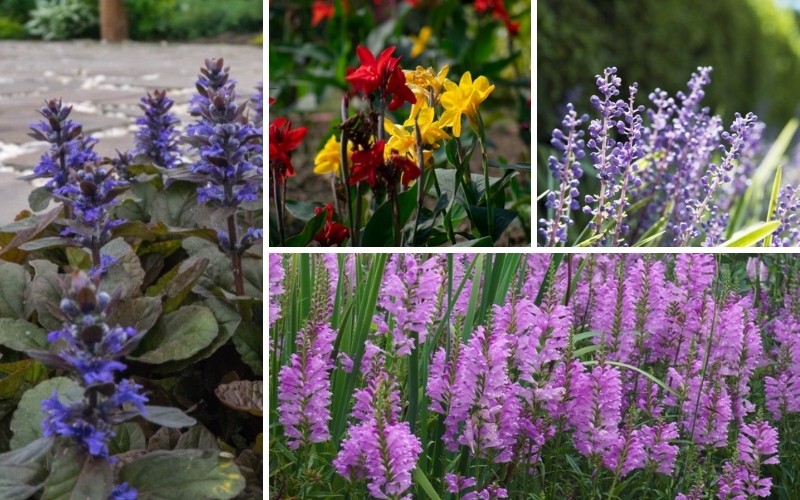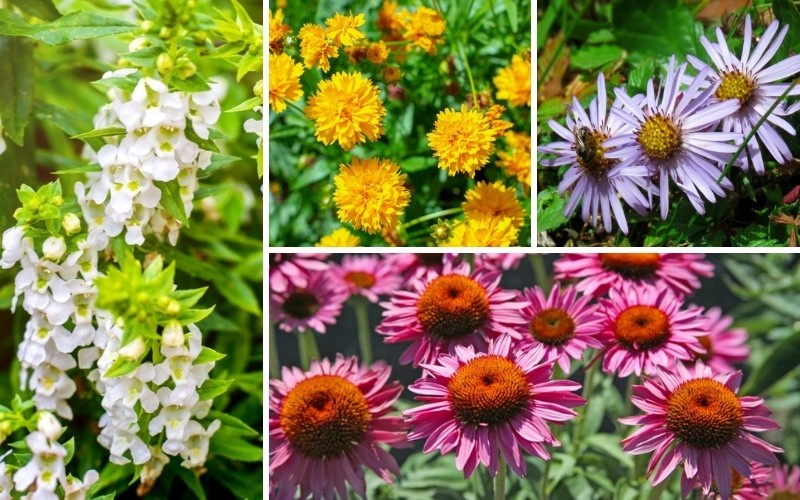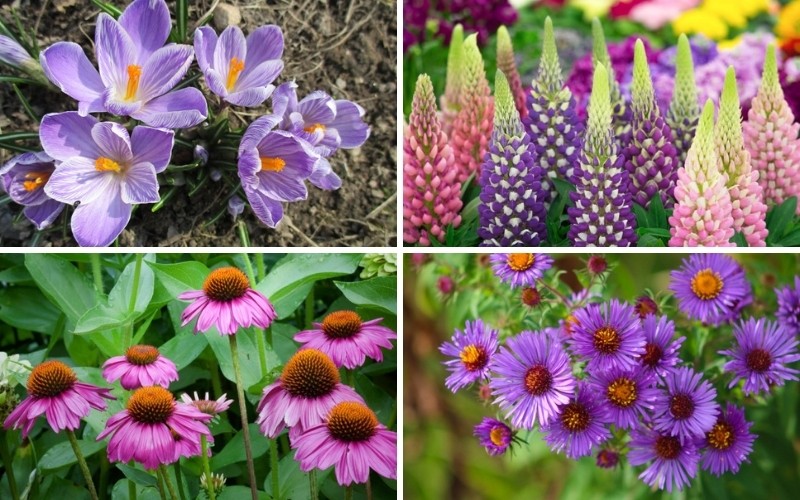
Planting pollinator plants that attract bees and other flying insects to the yard and garden is beneficial to both the insects and your garden. They provide food and shelter for bees while increasing pollination in the garden.
That means nearby fruit and veggie plants will produce an abundance of fruit and veggies for you and you will know you are doing your part to save the bees, too.
Planting perennials (flowers that return every year) known to attract bees in your flower beds and yard is an effective way to create a bee-friendly yard that is both functional and attractive.
Check out these perennials to attract bees to your yard and garden.
Black Eyed Susan
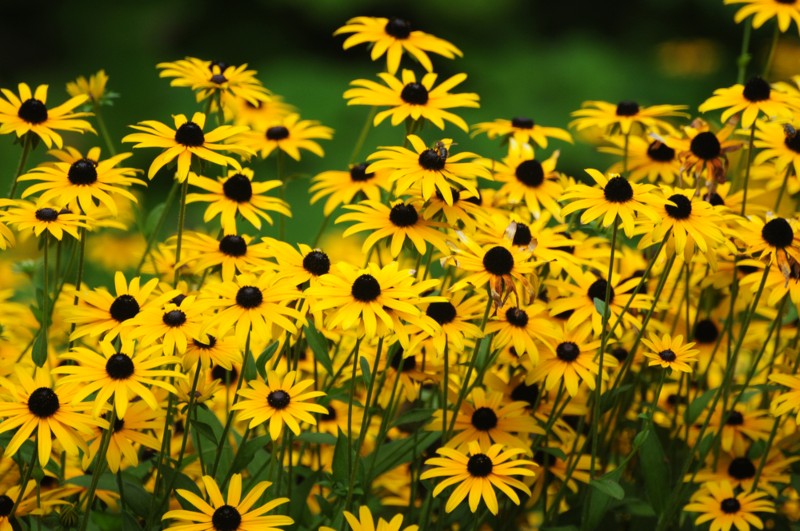
Black eyed Susans (Rudbeckia spp.) produce masses of yellow/orange, daisy-like blooms from early summer until frost and typically grow to heights of 24 to 36 inches. These hardy perennials thrive in USDA plant hardiness zones 2 thru 11, depending on the variety. Colors range from shades of yellow and orange with a dark brown center, to variegated or red petals with purple-brown centers. Black eyed Susans thrive in full sun, but will grow in partial shade. This perennial is drought resistant and will grow in nearly any soil as long as it drains well.
Coneflower
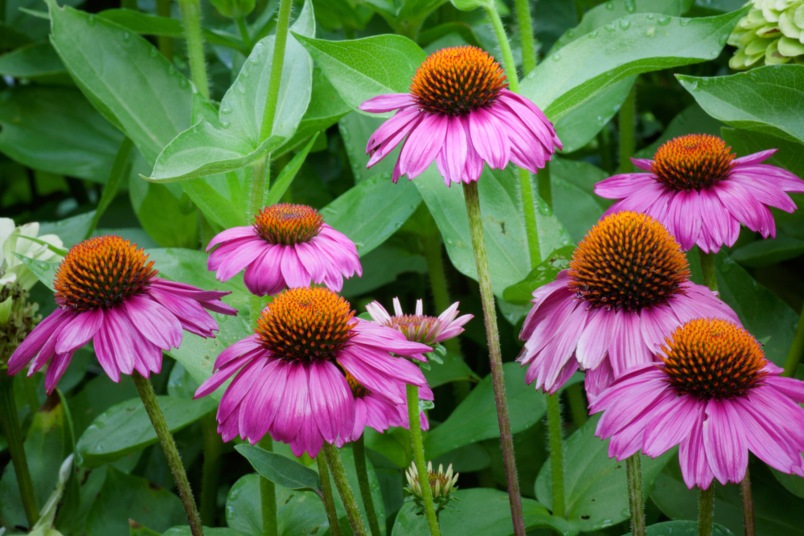
Coneflowers (Echinacea) produce large daisy-like blooms atop 2- to 3-foot plants. These plants thrive in USDA plant hardiness zones 3 thru 8, depending on the variety. Purple coneflowers with orange centers are probably the best recognized, but these delightful flowers come in a range of colors from nearly pure white to shades of yellow, orange and red, too. These showy flowers prefer full sun, but will survive in partial shade. They prefer humus-rich, well drained soil and are drought tolerant.
Hosta
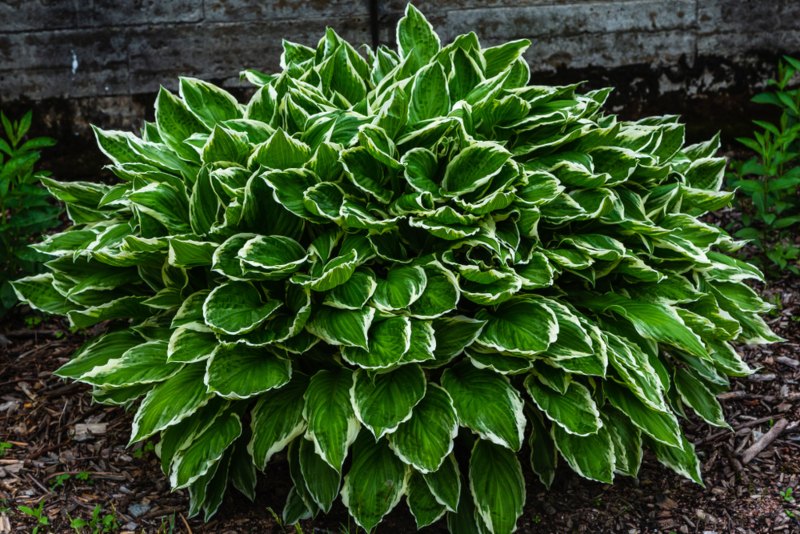
Hostas (Hosta spp.) are typically grown for their attractive foliage, but their blooms attract bees and butterflies, too. These perennials thrive in shady areas in USDA plant hardiness zone 3 thru 8. Bell-shaped blooms are held above the foliage on an arching stem and are shades of white, pink and lavender. Hostas prefer humus-rich, well drained soil and need at least 1-inch of water a week. While some hostas do well in direct sun, it is best to plant these perennials in dappled light or full shade.
Lupine
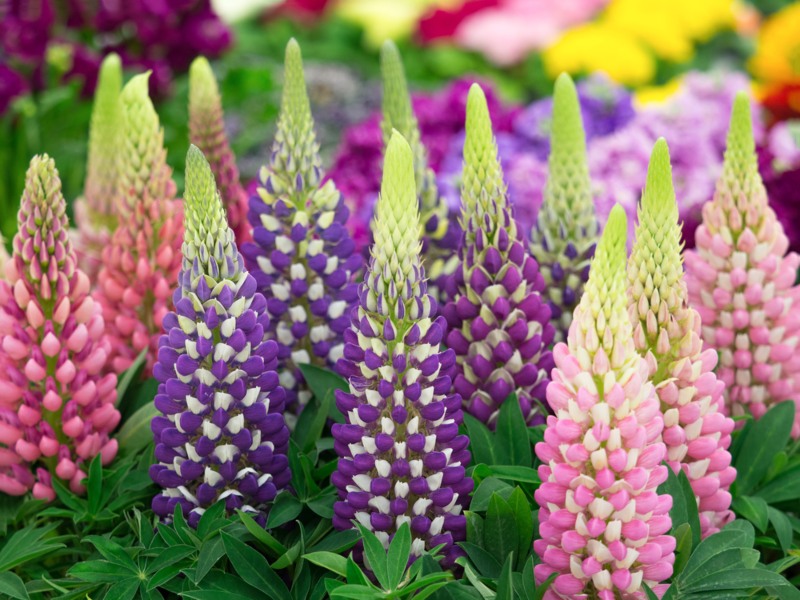
Lupines (Lupinus spp.) grow wild throughout the much of the United States with over 200 wild species, but you can purchase cultivated varieties too. These plants thrive in sandy soil but will survive in heavier soil if necessary. These sun-loving flowers bloom on a tall spike covered with individual blooms in the early spring. Colors range from white and pastel blues and pinks to deep red, yellows and purples.Lupines require well-drained soil. Lupines have attractive foliage when not in bloom.
New England Aster
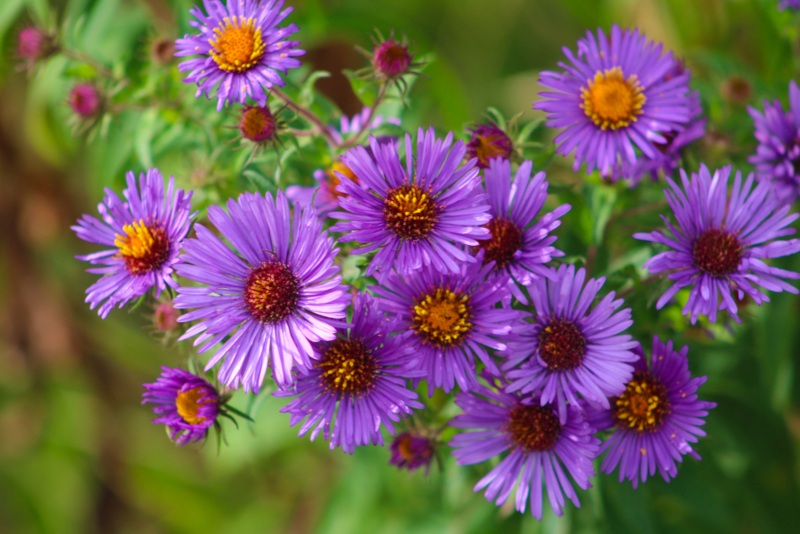
New England asters (Symphyotrichum novae-angliae) bloom with clusters of finely-cut, daisy-like blooms in late summer and early fall. They prefer full sun, but will grow in partial sun. Asters will grow in nearly any soil as long as it drains well. Hardy in USDA plant hardiness zone 3 thru 7, these flowers create an explosion of color in the fall. Colors range from pastel pink and blue to deep purple with subtle variations in each shade.
Russian Sage
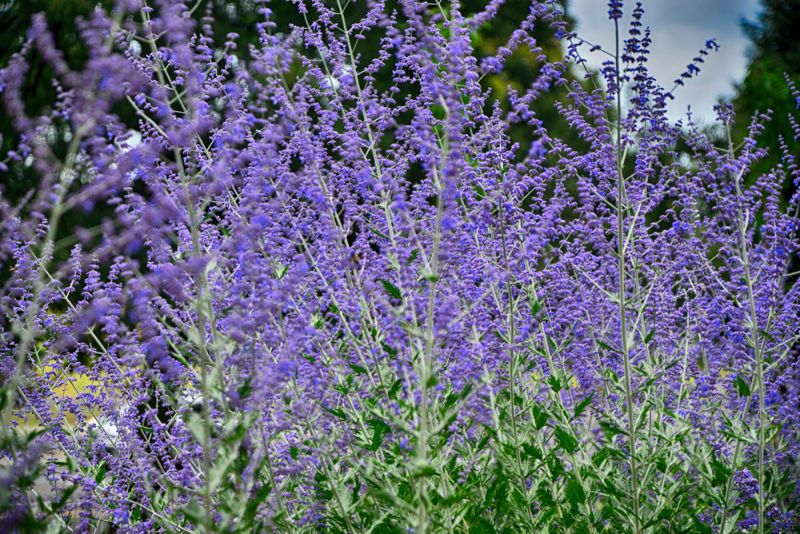
Russian Sage (Perovskia atriplicifolia) produces spikes of tiny purple flowers similar to lavender. This perennial thrives in sunny locations in USDA plant hardiness zone 3 thru 10 and prefers sandy soil. This plant blooms from midsummer through fall creating a spray of spikes 2 to 3 high.
Sunflowers

Perennial sunflowers (Helianthus), like Maximilian, produce a mass of tiny sunflowers from mid-summer until fall. These sun-loving flowers thrive in USDA plant hardiness zones 3 thru 9, depending on the variety. Colors range from pale yellow with dark centers to yellow-orange petals with lighter centers. Heights range from 3 or 4 feet to 10 feet, depending on the variety. Sunflowers require evenly moist soil that drains well and do not tolerate drought well.
Bee Balm
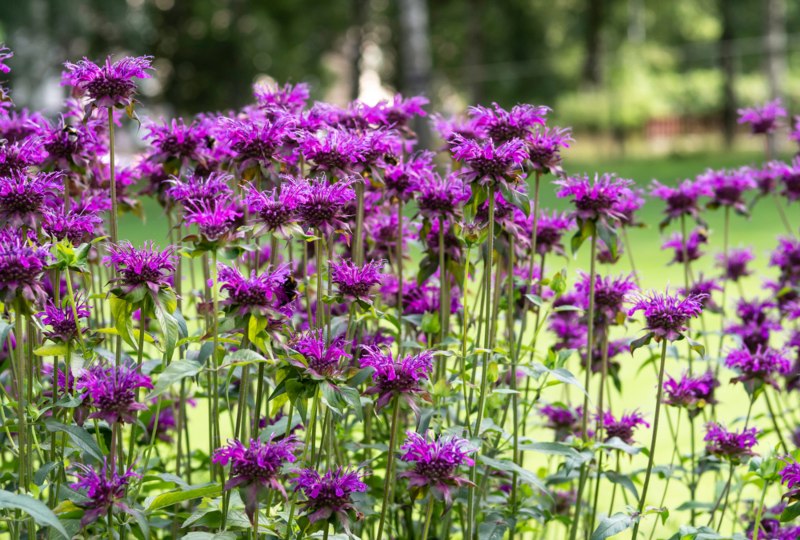
Bee balm (Monarda) is an easy-to-grow perennial that prefers full sun, but can be grown in partial shade. It is hardy in USDA plant hardiness zones 4 thru 9. Bee balm grows to a height 2 to 3 feet and produces showy pink, red and purple blooms from midsummer into the fall. It prefers humus-rich, moist soil.
Lavender

Lavender (Lavandula) produces a cluster of tall stems topped with a cluster of delicate lavender flowers. It is hardy in USDA plant hardiness zones 4 thru 9 and thrives in full sun. This hardy herb blooms from early summer until fall. It prefers well-drained soil. It will not tolerate shade.
Mint

Mint (Mentha spp.) is grown primarily for the leaves for tea or other culinary uses, but it produces abundant blooms if it is left to its own devises. This sun-loving plant can tolerate some shade, but blooming and growth will be inhibited. Mints are notoriously invasive so it is best to plant them away from the garden bed or in pots. Mint is hardy in USDA plant hardiness zones 3 thru 11, depending on the variety. This plant typically produces a mass of tiny purple or purple-pink blooms in midsummer.
Foxglove

Foxglove (Digitalis) is typically a shade-loving plant, but some varieties thrive in full sun. Tubular flowers appear on a tall spike in the early spring and range in color from white, yellow and pastel pinks to purple and red. It refers well-drained soil and survives in USDA plant hardiness zones 4 thru 10. Foxglove may rebloom in the fall. It ranges in height from 2 to 5 feet, depending on the variety and the growing conditions.
Crocus

Crocuses (Crocus spp.) are one of the first spring flowers, often popping up through patches of snow. These colorful flowers provide bees with nectar and pollen long before other flowers are in bloom. They range in color from white, pink,orange and yellow to many shades of purple and blue. Crocus are hardy in USDA plant hardiness zones 3 thru 8 and will thrive in nearly any soil as long as it drains well. Crocuses will grow in either full sun or partial shade.
Perennials require several years to reach their full beauty. First year perennials may not bloom or may produce only a few blooms, but rest assured they will return each year with bigger and brighter blooms. Most perennials require lifting and separating the plants every 3 to 5 years to keep the plants productive. Otherwise, consistent watering, deadheading old blooms and fertilizing once or twice a year is all that is needed to keep perennials healthy.





